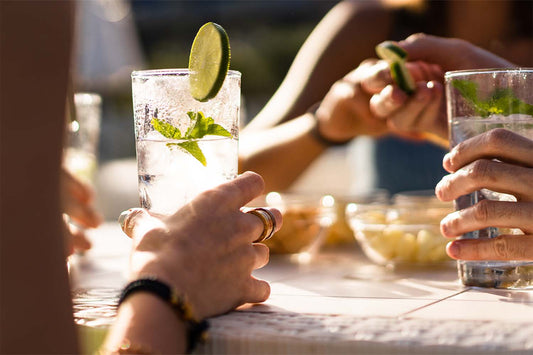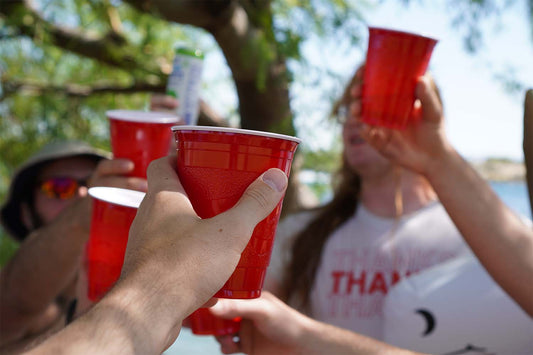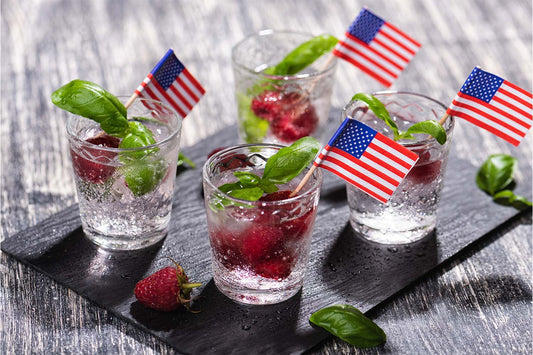Making cocktails is so much more than just throwing a few ingredients together. Mixology has turned into an art form, and there are so many more creative ways for you to make a drink than ever before. For instance, have you ever considered using dehydrated fruit for cocktails? We have a few ideas for how you can take your next aperitifs up a notch.
Dehydrated Fruits Are Sustainable
One of the most critical parts of using dehydrated fruits for cocktails is their sustainability. The more we learn about the Earth and the damage that much of our typical day-to-day living does to it, the more we become aware of how much we need to change. Anything that we can do as individuals to make those changes, even if it seems small, can make a world of difference as those impacts add up.
Don’t get us wrong — we love working with fresh citrus! Some drinks definitely require a twist of lime or a squeeze of lemon in them to shine. You don’t have to replace all of the fruit you use in your cocktails with dehydrated fruits, but even doing it some of the time can help.
When you remove the water content from fruit, it automatically becomes much lighter. That means that fewer resources need to be used to transport it across the country, lowering its carbon footprint. Using dehydrated fruit can help you make the most of that flavor without having nearly as much waste.
Plus, dried fruit can be made with the “less pretty” fruit, meaning that less is going to waste during the production process. After all, you might not choose the wonky-looking apple at the grocery store, but you wouldn’t even notice if it was sliced and dried.
Ways To Use Dehydrated Fruit for Cocktails
Dehydrated fruit can add a lot to the flavor of a cocktail. When you dehydrate fruit, it concentrates its flavors without having to mess around with zesting and peeling. The only downside of using dehydrated instead of fresh is that it doesn’t have the same aroma as freshly juiced fruit — but the right aperitif will make up for it!
Think of using dehydrated fruit for cocktails similarly to how you would add salt or pepper when you’re cooking — a little extra flavor can make or break the entire dish!
Dehydrated fruits can also make a fantastic, picturesque garnish for any drink. Just rim the edge of your glass with a bit of salt or sugar (depending on the drink), add a dehydrated lemon or lime wheel, take a picture for your social media page, and enjoy! It’s an easy way to make any cocktail the talk of the party, and putting that effort in shows your guests how much you care about their experience.
Another plus side of using dehydrated fruit for cocktails is that they don’t water down the drink's flavor over time. When you add fresh lime or lemon to a drink, it tends to muddy the flavor and make it far more citrus-forward as time goes on. Combined with the melting ice, the taste you get at the bottom of the glass will be much different from the taste when it was first made. This makes using dried fruit an added bonus for aperitifs, as they were designed to be sipped instead of drank quickly.
How To Make Dehydrated Fruit for Cocktails
If you decide to use dehydrated fruit for cocktails, why not take it a step further and make them yourself?
Buying your dehydrated fruit from the store can get expensive very quickly, but making it yourself gives you control and still leaves some money in your pocket. And the best part is, you don’t need any special equipment to do it. Any fruit (or vegetable) can be dehydrated if you know the basic premise.
Step One: Make Sure Your Fruit Is Clean
It’s a known fact that the surfaces of the vast majority of fruit are covered with bacteria. Before you dehydrate any fruit, make sure to clean it first. Most of the time, just a quick 5-10 second rinse under cold, running water and a scrub with a clean vegetable brush are enough to get rid of most of the surface germs and keep yourself safer.
Always allow your fruit to dry before dehydrating it, too. That way, you’re getting the right texture and not trapping excess moisture in and making it soggy.
Step Two: Peel the Fruit
While you don’t have to peel the fruit before dehydrating it, especially if the fruit you’re using has an edible peel, it’s usually a good idea.
Step Three: Slice the Fruit Into Small Pieces
After your fruit is peeled, the next step is to slice it into small pieces. Keep in mind that the size of the finished product will be much smaller, but you want to cut it into the shapes you want before the dehydration process.
If you’re working with smaller fruits like strawberries, you can also keep them whole. Very small fruits like blueberries and cranberries should be pierced with a knife or clear skewer so that they dehydrate equally (and don’t get too tough!). Experiment with different sizes and shapes and see what works best for you!
If the fruit you’re working with has seeds or a pit, make sure that you remove that as you’re slicing your fruit.
Remember, the size of your fruit controls the time it takes for the dehydration process to be complete. Only dehydrate fruits of the same general size together to make sure everything gets done at the same time.
Step Four: Spray Your Fruit With Lemon Juice
This may sound like a strange step to take, but spraying your fruit with lemon juice before dehydrating it can stop it from browning up too much during the dehydration process. While this isn’t essential, it does help keep your fruits looking bright and closer to the original color of the fruit.
If you’re in it for the visual appeal, you don’t want to skip this step! You can use a small spray bottle or brush the surface of the fruit lightly with lemon juice on a pastry brush.
Step Five: Arrange Your Fruit Appropriately
After your fruit is cut appropriately and sprayed with lemon juice, you’ll want to arrange it on a tray in a single layer. That helps ensure the fruit doesn’t get stuck together as it dries and that each piece dehydrates at about the same pace. Keep in mind that most fruit tends to drip as it dries out, so if you’re using your oven, make sure that you place a pan or foil under it to catch any liquid.
Step Six: Dry Your Fruit!
It’s time for the best part — actually drying your fruit! If you’re using a dehydrator, follow the model’s recommendations about what time and temperature the fruit should be cooked at.
If you’re drying your fruit in the oven, set the temperature between 125 and 140 degrees Fahrenheit. The process is much quicker in an actual dehydrator and can take 6+ hours in the oven. Check the fruit every 2 hours or so, let it cool, and enjoy!
Aperitif Cocktail Recipes With Dehydrated Fruit
One of our favorite recipes with dehydrated fruit is also one of the classics — the Old Fashioned. If you’re unfamiliar, the cocktail is made with two ounces of bourbon or rye whiskey, a sugar cube (or a teaspoon of sugar), a little water, and a few dashes of Angostura bitters.
Unfortunately, although Old Fashioneds are a classic, they are definitely high in alcohol. If you’re trying to enjoy your night a little slower, with a much lower chance of a hangover, we have another suggestion.
Instead of drinking bourbon, try our New Fashioned aperitif. Our New Fashioned was designed with a similar flavor profile but with a lower ABV. Spiced and smooth, we combine a hint of citrus with spices like clove, ginger, Saigon cinnamon, and ginger. You can drink this aperitif on the rocks or mix it with a splash of prosecco, sparkling water, or tonic water. Then top it off with a slice of dehydrated orange to make it both look and taste amazing.
For a slightly different take, try our Spiced Cherry aperitif. It has many of the same notes as the New Fashioned, with a deep, complex flavor. It already includes dried cherry, so adding more dehydrated cherry can further bring that flavor.
Or, if you prefer your drinks a little sweeter, check out our Citrus Flower aperitif. With a piece or two of dehydrated orange or lemon to compliment the citrus flavors and a splash of prosecco over ice, you’ll have a light, refreshing cocktail perfect for any summer evening.
In Summary
Haus believes strongly in the aperitif lifestyle. We could all use a reminder to slow down and enjoy life a little bit more without having to pay for it the next day.
Our aperitifs are meant to be sipped while sitting around with good friends, catching up, and discussing life. When’s the last time you spent quality time with the people who are the most important to you?
Sources:
What is Sustainability? | UCLA
Bacterial Communities Associated with the Surfaces of Fresh Fruits and Vegetables | PubMed




